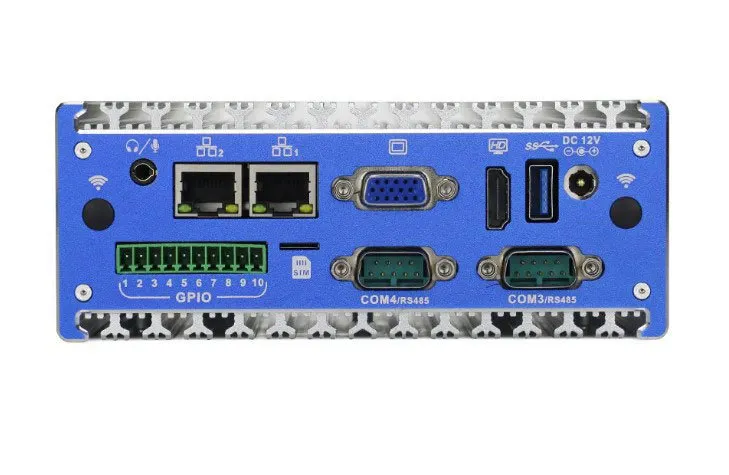An IoT Gateway serves as the crucial bridge between IoT devices (such as sensors, machines, and devices) and cloud or edge computing platforms, enabling seamless communication and data flow between the physical and digital worlds. These gateways are designed to collect, process, and securely transmit data from various IoT devices to centralized systems, cloud services, or other IoT devices, allowing for real-time monitoring, analysis, and decision-making.
IoT Gateways play a central role in Industry 4.0, smart cities, healthcare, and various other industries, ensuring that data from connected devices can be efficiently captured, analyzed, and acted upon. Whether in remote locations, industrial environments, or consumer applications, IoT Gateways help manage the massive amount of data generated by IoT devices and ensure that this data is transmitted securely and efficiently.

We could supply industrial automation products related to IoT such as Sensors, Gateway, Data Loggers, wireless telemetry, IoT Dashboard , Satellite based IoT Telemetry. You may also visit our products portfolio.
Data Aggregation and Processing: IoT Gateways aggregate data from various IoT devices, preprocess it locally (edge computing), and send relevant data to the cloud or other centralized systems. This reduces the amount of raw data sent over the network, optimizing bandwidth and reducing latency.
Protocol Conversion: IoT devices often use different communication protocols (e.g., Modbus, MQTT, CoAP, Zigbee, LoRa, Bluetooth). Gateways can convert these protocols to ensure interoperability and seamless communication between devices and systems.
Security and Encryption: Security is a primary concern in IoT environments. IoT Gateways provide strong encryption and authentication mechanisms to protect data and devices from cyber threats. They often include VPNs, firewalls, and secure boot features to ensure a high level of security.
Edge Computing Capabilities: Many IoT Gateways offer edge computing capabilities, allowing them to process data locally before sending it to the cloud. This reduces latency, minimizes network congestion, and allows for real-time decision-making without relying on cloud servers.
Remote Management: IoT Gateways often feature remote management capabilities, enabling administrators to monitor, configure, and troubleshoot devices from a central location. This is particularly useful for large-scale IoT deployments in industrial environments or remote locations.
Multiple Connectivity Options: IoT Gateways support various connectivity options like Wi-Fi, Ethernet, cellular networks (4G/5G), Bluetooth, Zigbee, and LoRaWAN, ensuring flexible deployment and scalability.
Industrial Automation (Industry 4.0): In manufacturing plants and industrial environments, IoT Gateways connect machines, sensors, and devices, enabling real-time monitoring, predictive maintenance, and automation of production processes.
Smart Cities: IoT Gateways are key to enabling smart city infrastructure by connecting traffic sensors, environmental monitoring systems, smart lighting, and more. These devices work together to enhance city operations, improve energy management, and enhance citizen services.
Healthcare and Remote Patient Monitoring: IoT Gateways facilitate remote monitoring of patients' vital signs and medical devices. They securely transmit data to healthcare professionals for real-time analysis and intervention, enabling telemedicine and remote diagnostics.
Agriculture and Smart Farming: In agriculture, IoT Gateways connect soil moisture sensors, temperature monitors, irrigation systems, and other farming equipment. Data collected from the field is processed and sent to the cloud for analysis, helping farmers make better decisions about crop management.
Logistics and Supply Chain Management: IoT Gateways enable real-time tracking of goods in transit, warehouse management systems, and fleet management. They provide data on location, temperature, humidity, and condition of goods, improving operational efficiency and supply chain transparency.
Smart Homes and Buildings: IoT Gateways in smart homes or commercial buildings connect devices like lighting, security systems, HVAC, and energy meters. They enable centralized control, automation, and energy optimization for greater convenience and cost savings.
Energy Management: In energy grids or renewable energy systems, IoT Gateways connect energy meters, generators, and other devices, allowing for real-time monitoring and control of energy production, distribution, and consumption.
Connectivity:
Processing Power:
Data Management and Protocols:
Power Supply:
Environmental Specifications:
Physical Size:
Remote Management & Monitoring:
